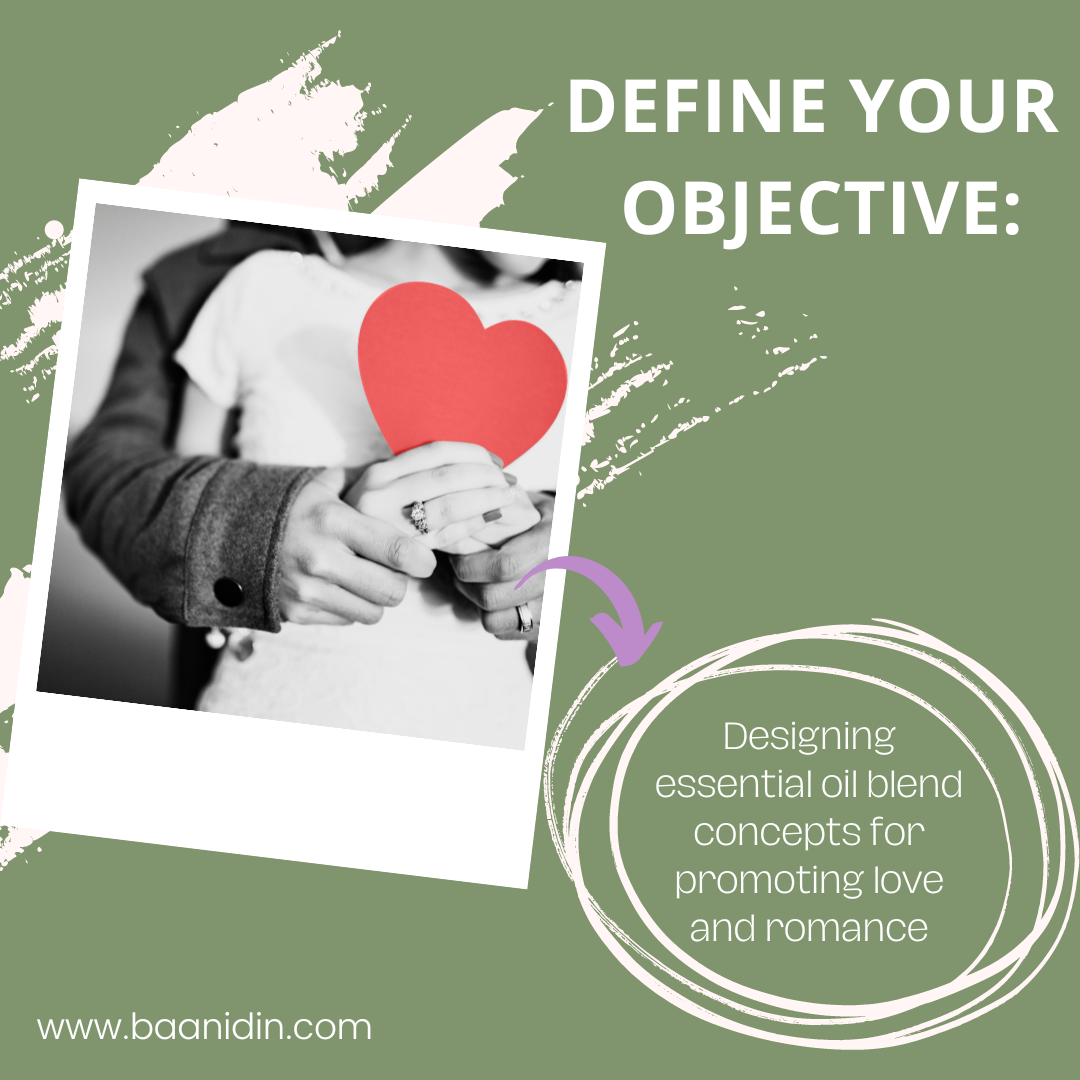how to design essential oil blend concepts for " love "
813 Views |

Designing essential oil blend concepts for promoting love and romance requires a thoughtful approach, considering both the aromatic properties of the oils and the emotional and sensual experience you want to create. Here's a step-by-step guide to help you design your own "In Love" essential oil blend concepts:
1. Define Your Objective:
Clearly outline your intention. What kind of love or romantic experience are you aiming to evoke? Is it self-love, intimacy with a partner, or a general sense of love and connection?

2. Research Essential Oils:
Familiarize yourself with essential oils that have aphrodisiac, romantic, or emotionally uplifting properties. Some examples include rose, ylang-ylang, jasmine, patchouli, sandalwood, and neroli.
3. Consider Scent Profiles:
Think about the scent profiles that resonate with your objective. Do you want a floral, sweet, spicy, or woody aroma? A well-balanced blend can combine various scent notes.
4. Choose Your Base, Middle, and Top Notes:
Essential oils are classified into base, middle, and top notes based on their volatility and aromatic strength. A well-rounded blend often includes a combination of all three note categories.
Base Notes: These oils provide depth and staying power to the blend. Examples include sandalwood, patchouli, and vetiver.
Middle Notes: These oils contribute to the body of the fragrance and are often floral or herbal. Examples include rose, ylang-ylang, and geranium.
Top Notes: These oils are light, fresh, and fleeting. They provide the initial burst of fragrance. Examples include bergamot, lemon, and orange.
5. Experiment with Ratios:
Start with a base of one or two base notes, add a few middle notes for complexity, and finish with one or two top notes for a pleasant initial scent. Experiment with different ratios to find the right balance.
6. Create Your Blend:
Use a small glass bottle (amber or cobalt blue is preferred) to mix your essential oils. Start with a small batch for testing.
7. Document Your Recipe:
Keep track of the number of drops of each essential oil you use in your blend. This documentation will help you recreate the blend later.
8. Test Your Blend:
Apply a diluted version of your blend to your skin to ensure it doesn't cause any irritation or allergies. Ensure the aroma aligns with your intended emotional experience.
9. Adjust as Needed:
If the blend isn't achieving the desired effect, tweak the ratios or add different essential oils until you achieve the desired scent and emotional response.
10. Create Labels and Instructions:
Design labels for your essential oil blend bottles. Include the blend's name, ingredients, usage instructions, and any safety precautions.
11. Share Your Blend:
If you're creating these blends for personal use, enjoy them in your home or as part of your self-care routine. If you plan to sell them, ensure they comply with regulations and labeling requirements.
Remember that creating essential oil blends is a creative process, and there's no one-size-fits-all approach. Trust your intuition and the emotional response you get from your blends to refine your "In Love" essential oil concepts.





